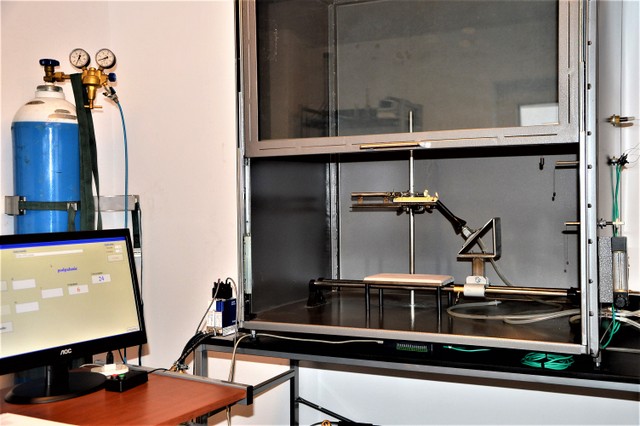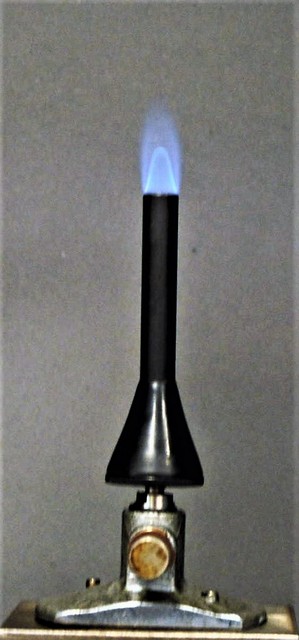PN-EN 60695-11-10 UL 94
Laboratory
IGNITABILITY TEST OF MATERIALS AND
PRODUCTS WITH 50 W THERMAL POWER
FLAME TEST METHODS
ACCORDING PN-EN
60695-11-10, UL 94 AND PN-EN
45545-2
Principle
of the method.
Small-scale
laboratory test procedures intended to compare the burning behavior
of different materials used in electrotechnical products when
vertically or horizontally oriented test bar specimens are exposed to
a small flame ignition source with nominal thermal power of 50 W.
These test methods determine either the linear burning rate or the
self-extinguishing properties of materials. A
rectangular bar-shaped test specimen is supported horizontally or
vertically by one end and the free end is exposed to a specified test
flame. The burning behavior of the horizontally supported bar under
specific test conditions is assessed by measuring the linear burning
rate. The
burning behavior of the vertically supported bar under specific test
conditions is assessed by measuring the afterflame and afterglow
times (observing whether the materials self-extinguish), the extent
of burning and the dripping of flaming particles.


Stand
for testing the assessment of ignitability of materials/products
with 50 W flame test methods
The
level of fire hazard to be determined shall be the classes: HB, HB40,
HB75, V-0, V-1 I V-2. The listed classification is identical with the
US classification UL 94: UL 94 HB, UL 94 HB40, UL 94 HB75, UL 94 V-0,
V-1 I UL 94 V-2 because the test is carried out by identical methods.
Test specimens.
Bar
test specimens shall measure 125± 5 mm long by 13,0± 0,5 mm
wide, and shall be provided in at least the minimum and maximum
thickness for which the flame classification is under consideration
(see Figure 4). The preferred thickness values include 0,1mm, 0,2mm,
0,4mm, 0,75mm, 1,5mm, 3,0mm, 6,0mm. and/or 12,0mm.
The thickness of the sample should not
exceed 13 mm. Testing for other thicknesses may be performed,
provided that this is indicated in the report. The edges of the
samples should be smooth and the radius of the edge must not exceed
1.3 mm.
A minimum of 6
bar test specimens for method A
and 20 test specimens for method B
shall be prepared.
Applying
research methods:
- civil engineering (electric products),
- railways (according to R26 requirements of the norm PN-EN 45545-2).
